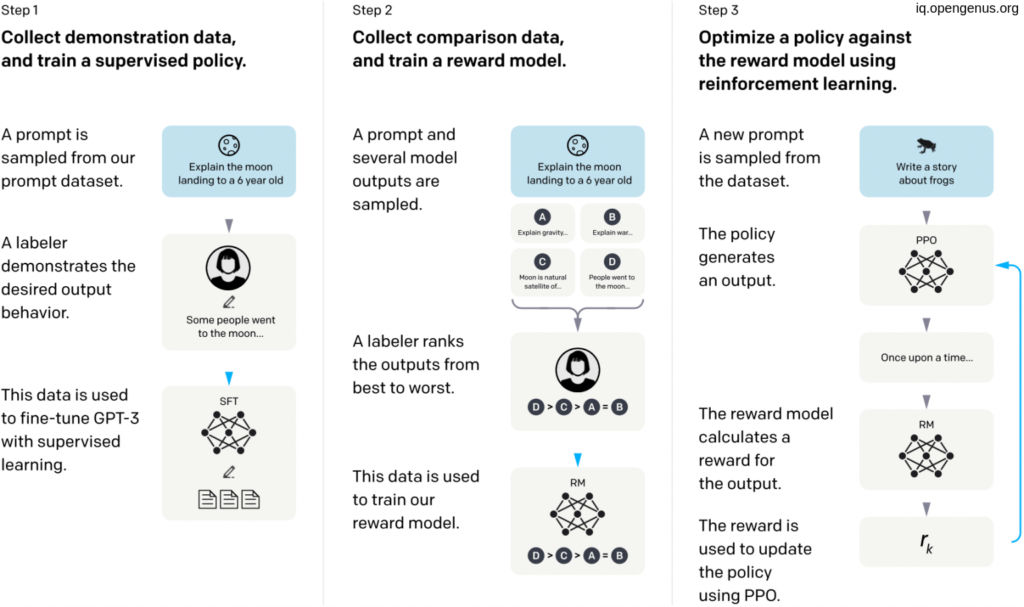Introduction
In the ever-evolving landscape of artificial intelligence, mastering prompt engineering has emerged as a pivotal technique for refining and optimizing AI models. At aiblux, we specialize in providing tailored software solutions that leverage the latest advancements in technology. Today, we delve into the world of prompt engineering and how mastering prompt engineering can revolutionize your AI projects.
What is Prompt Engineering?
Prompt engineering is the process of designing and refining input prompts to achieve desired outputs from AI models, particularly language models. By crafting precise and effective prompts, developers can guide AI systems to produce more accurate, relevant, and high-quality results.
The Importance of Prompt Engineering in AI Development
Incorporating prompt engineering into your AI development process offers several key benefits:
- Enhanced Model Performance: Well-designed prompts can significantly improve the accuracy and relevance of AI outputs.
- Cost Efficiency: Optimizing prompts can reduce the need for extensive retraining of models, saving time and resources.
- User Satisfaction: High-quality outputs lead to better user experiences and satisfaction.
- Agility in Development: Prompt engineering allows for rapid iteration and fine-tuning, aligning with agile methodologies.
Steps to Effective Prompt Engineering
- Understand the AI Model: Familiarize yourself with the capabilities and limitations of the AI model you are using. This knowledge will inform your prompt design process.
- Define Clear Objectives: Clearly articulate what you want the AI to achieve. Whether it’s generating text, answering questions, or performing a task, specific goals will guide your prompt creation.
- Craft Precise Prompts: Design prompts that are clear, concise, and contextually relevant. Avoid ambiguity and provide as much detail as necessary to elicit the desired response.
- Iterate and Refine: Continuously test and refine your prompts based on the AI’s performance. Use feedback to make incremental improvements.
- Incorporate User Feedback: Engage with end-users to gather insights on the AI’s performance. User feedback is invaluable for refining prompts to better meet their needs.
Case Study: Improving Customer Support with Prompt Engineering
One of our clients in the e-commerce sector faced challenges with their AI-powered customer support chatbot. The chatbot’s responses were often irrelevant, leading to customer frustration.
By applying prompt engineering techniques, we redesigned the chatbot’s prompts to be more specific and context-aware. The result was a significant improvement in the accuracy of the chatbot’s responses, enhancing customer satisfaction and reducing support tickets.
| Aspect | Before Prompt Engineering | After Prompt Engineering |
| Response Relevance | Irrelevant | Context-specific |
| Response Quality | Low | High |
| User Satisfaction | Frustrated | Satisfied |
| Clarity | Cluttered | Clear |
Tools and Techniques for Effective Prompt Engineering
- Prompt Tuning: Adjusting prompts to fine-tune model outputs without extensive retraining.
- Contextual Prompts: Providing context within prompts to guide the AI more effectively.
- Feedback Loops: Implementing continuous feedback mechanisms to refine prompts over time.
- Interactive Prompt Testing: Using tools that allow real-time testing and adjustment of prompts to see immediate effects on model output.

Challenges in Prompt Engineering
While prompt engineering offers numerous benefits, it also presents challenges:
- Complexity: Designing effective prompts can be complex and requires a deep understanding of both the AI model and the application domain.
- Resource Intensive: Iterative testing and refinement can be time-consuming.
- Scalability: Maintaining prompt quality as AI systems scale can be challenging.
- Balancing Specificity and Generalization: Crafting prompts that are specific enough to guide the model effectively but general enough to handle a variety of inputs can be difficult.
Advanced Strategies for Prompt Engineering
- Layered Prompts: Using multiple layers of prompts to break down complex tasks into manageable steps.
- Adaptive Prompts: Designing prompts that adapt based on previous interactions or outputs to create a more dynamic and responsive AI system.
- Hybrid Prompting: Combining prompts with other AI techniques such as reinforcement learning to enhance model performance.
- Prompt Chaining: Creating a sequence of prompts where the output of one prompt becomes the input for the next, enabling more sophisticated and context-aware interactions.
Industry Applications of Prompt Engineering
Prompt engineering has wide-ranging applications across various industries:
- Healthcare: Improving diagnostic tools by generating precise medical recommendations.
- Finance: Enhancing fraud detection systems through more accurate anomaly detection prompts.
- Education: Developing intelligent tutoring systems that provide personalized learning experiences.
- Logistics and Supply Chain: Optimizing supply chain management by refining predictive models for demand forecasting.
- Automotive: Advancing autonomous driving systems with better decision-making prompts.
Future of Prompt Engineering
As AI technology continues to evolve, mastering prompt engineering will become even more critical. Future trends include:
- Integration with Advanced AI Models: Using prompt engineering with more sophisticated models like GPT-4 and beyond.
- Automated Prompt Generation: Developing AI tools that can generate and refine prompts automatically based on performance metrics.
- Cross-Disciplinary Collaboration: Combining insights from linguistics, psychology, and domain-specific knowledge to create more effective prompts.
- Ethical Considerations: Ensuring that prompt engineering practices align with ethical guidelines to prevent biases and ensure fairness in AI outputs.
Conclusion
Mastering prompt engineering is a powerful tool in the AI developer’s toolkit, enabling more precise and effective AI outcomes. By leveraging prompt engineering, businesses can enhance AI performance, reduce costs, and improve user satisfaction. At aiblux, we are committed to delivering innovative, client-centric software solutions that meet your unique business needs.
Ready to transform your AI projects with expert prompt engineering? Contact us today to learn more about our services and how we can help you achieve your goals. Explore our offerings at aiblux.
